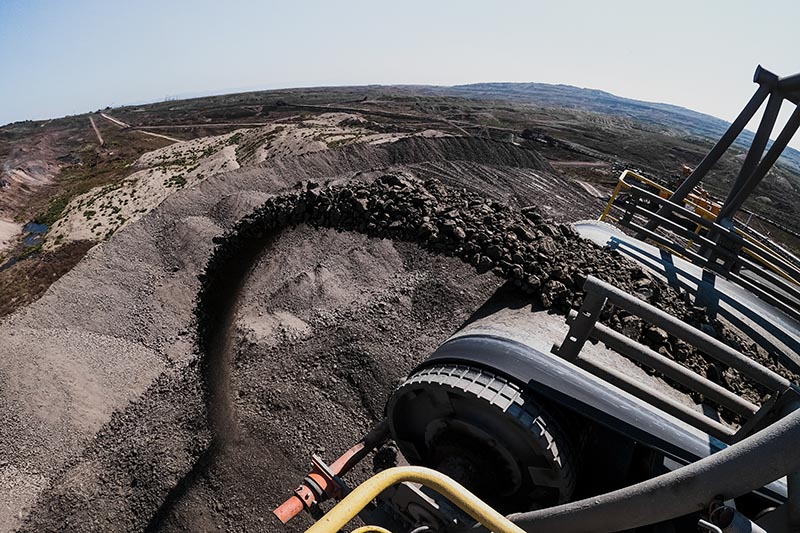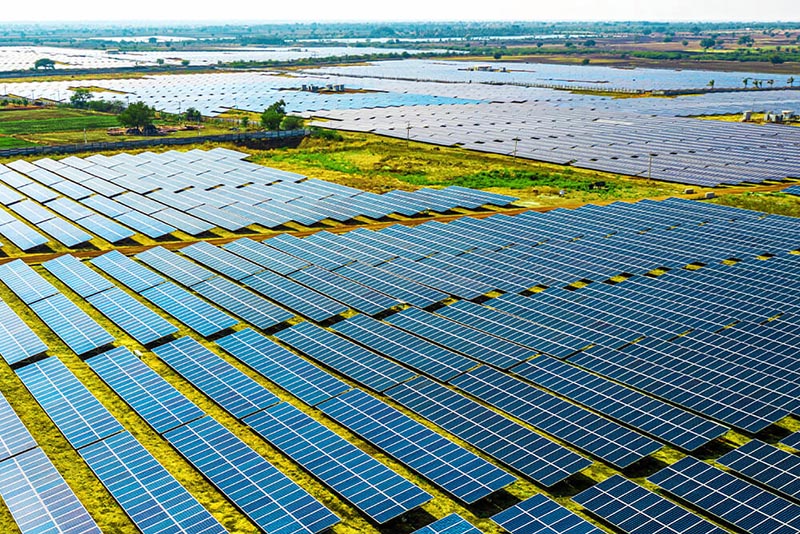
Country focus: Malaysia at an energy crossroads
Traditionally, Malaysia has been a large producer of oil and natural gas. According to a 2021 analysis by the United States Energy Information Association (EIA), Malaysia is the second-largest oil and natural gas producer in Southeast Asia. The region punches above its weight on a global scale and is the world’s fifth-largest liquefied natural gas (LNG) exporter.
Malaysia held crude oil and condensate reserves of 4.7 billion barrels, as of 2019, alongside natural gas reserves of 9.9 trillion standard cubic feet (tscf) of associated gas and 69.3 tscf of non-associated gas. Natural gas production ranges between 2.7 exajoules (EJ) and 3.0 EJ per year, while crude oil production reached 1.25 EJ in 2019. Coal production of 3.4 million metric tonnes was achieved in the same year.

Oil and gas dominate Malaysia’s energy supply, whereas coal is currently the largest source of electricity in the country. Share of renewables in total primary energy is small, led by contributions from hydropower (2.3%) and other renewables (1.1%). Perhaps emphasising the central role that fossil fuels play in the Southeast Asian country, government-owned oil and gas company, PETRONAS, is the most valuable brand in Malaysia and a significant contributor to the Commonwealth nation’s gross domestic product or GDP (8%).
However, Malaysia’s energy system is at a crossroads, according to a recent report by the International Renewable Energy Agency (IRENA), produced in collaboration with Malaysia’s Ministry of Natural Resources, Environment and Climate Change (NRECC).
The Malaysia Energy Transition Outlook (“The Outlook”), published on March 9, 2023, insists that Malaysia needs to choose between continuing to prioritise its diminishing oil and gas resources versus harnessing the considerable potential for renewable energy in the region. The Outlook warns of future reliance on oil and gas imports from volatile energy markets while highlighting the unique opportunity to create a sustainable, affordable, domestic alternative to fossil fuels using renewables.
According to the World Bank, Malaysia’s population reached 33.57 million in 2021. By 2050, this number is expected to exceed 40 million and will be accompanied by a tripling in the size of the local economy. Energy supply is expected to increase to 6.7 EJ—from 4.1 EJ in 2018—a 1.5% annual increase.
Malaysia’s proximity to the equator and high solar irradiation, as well as good wind streams from the Indian Ocean and the South China Sea, present strong renewable potential. The country is already one of the largest biofuel producers with six million hectares of palm plantations. Although, The Outlook notes that limited analysis has been completed on how effectively the local transmission grid can accommodate renewable energy resources.
At 0.37% of global carbon dioxide emissions, Malaysia’s carbon footprint is small. Nevertheless, the Malaysian government has acknowledged it needs to play its part in global climate efforts. “Malaysia recognises the importance of a future-proof energy system that is modern, reliable and affordable. We also believe that a sustainable and low-carbon energy sector is vital to contain the impacts of climate change,” says Nik Nazmi Nik Ahmad, minister of natural resources, environment and climate change Malaysia. In September 2021, Malaysia’s prime minister announced a carbon neutrality target of 2050 and the government is working on a Long-term Low Emission Development Strategy that will determine the way forward.
The Outlook confirmed the ability of Malaysia to achieve its net zero ambition and underlines that renewables are the solution. A long-term pathway to a cleaner and more sustainable energy system includes boosting the share of renewables in the final energy mix to over half by 2050, compared to 5% today.
IRENA’s analysis outlines several energy scenarios. A Transforming Energy Scenario (TES) offers renewable energy expansion and energy efficiency and is underpinned by available and competitive low and zero-carbon technologies. The 1.5°C Scenario (1.5-S) takes it a step further and aligns with IRENA’s World Energy Transitions Outlook and global efforts to achieve net zero. A Planned Energy Scenario (PES) is a reference case that reflects current plans and expected objectives or policies.
Not only is the 1.5-S in the best interests of Malaysia and its inhabitants, but The Outlook observed that this scenario would save up to USD13 billion annually in avoided energy, climate and health costs. A reduction in energy sector emissions to only 120 million tonnes of carbon dioxide by 2050 is 58% lower than the current pathway. Carbon removal and storage measures will still be required to reach net-zero emissions including land use changes and forestry.
1.5-S requires rapid expansion of renewables, with the share of total final energy consumption increasing to 59% by 2050, from 5% in 2018. IRENA highlighted the important role of electrification as the dominant energy carrier, with generation set to double from today’s levels in both the TES and 1.5-S scenarios. The Outlook also stressed the need for substantial energy storage, particularly in Sabah and Peninsular Malaysia.
Solar photovoltaic (PV) is a key technology in all IRENA scenarios. Installed capacity reaches 153 gigawatts (GW) by 2050 in 1.5-S, or 83 GW in TES. The report also noted the significance of energy efficiency measures and technologies. 1.5-S requires a 2.4% annual improvement in energy intensity, up from 1.6% in PES.
Beyond electricity, bioenergy is the next biggest contributor in the net-zero transition, accounting for 16% of total final consumption by 2050 (680 petajoules), with biofuels as the primary source. Bioenergy applications include the transport, industry and non-energy sectors.
Emerging technologies, such as hydrogen, also play a vital role. Hydrogen is a complementary solution and IRENA expects green hydrogen to reach 5% of total final energy consumption in a net-zero scenario with demand of 1.5 million tonnes. Current production of clean hydrogen in the region is negligible and this is an urgent need for investment in “disruptive technologies.”
Malaysia’s vehicle fleet is projected to double by 2050 from today’s 29 million, which comprises mostly motorcycles and cars. Electricity is an obvious route to decarbonise the sector and a projected 76% of all road vehicles will run on electricity by 2050 in 1.5-S—although early investment is required to fuel electric vehicle growth. By 2030, one-third of annual car and motorcycle sales need to be electric vehicles (EVs). Biofuels will support the hard-to-electrify road freight sector and aviation industries.

In the industrial sector, hydrogen and biomass play important roles. Biomass expansion allows the substitution of natural gas in heat-intensive processes. IRENA expects industry sector emissions to grow in the short term before falling again by 2050—to similar levels as today.
Significant reform will see renewables become the backbone of the power system. The Outlook offered two decarbonisation routes in its 1.5-S scenario. 90% renewables combined with carbon capture and storage requires 103 GW of installed PV, whereas a 100% renewables scenario needs 153 GW of PV alongside 36 GW of other renewables and is supported by 20 GW of battery storage.
The report outlined a big shift in fuels with almost one-fifth of Malaysia’s fuel demand to be renewable-based by 2050, compared to 1% today. Bioenergy, renewable direct-use (such as solar thermal) and hydrogen are the key contributors.
Several recommendations were provided to accelerate Malaysia’s energy transition including the need for a “cohesive and integrated” energy system and policy planning. The authors called for the development of new policy mechanisms that open renewable energy markets and increase consumer participation. A need for regulatory and legal frameworks that improve system flexibility for the cost-effective integration of renewables are also necessary and The Outlook identified the importance of encouraging technology and innovation by supporting enabling technologies—with particular emphasis on hard-to-abate sectors.
Renewable energy finance is a major hurdle to accelerating the energy transition. Malaysia needs to develop an investment environment that is conducive to renewables, says IRENA. Over 70% of total investment required, at least USD375 billion, are power sector and grid-related investments to overcome challenges around grid integration and grid flexibility.
The Outlook also noted the influence of direct and indirect fuel subsidy policies on fossil fuel use. This is particularly prevalent in the transport sector where low pump prices for consumers are a feature of the market. Energy-related fossil fuel subsidies investment would be better redirected towards renewables and energy efficiency, says IRENA.








